In the vicinity of my place, at 1833 Nagabusamachi, Hachioji City, Tokyo, there is the Musashi Imperial Graveyard where Mausoleums of the 123rd Emperor Taisho (Taisho Tenno) and the 124th Emperor Showa (Showa Tenno) and their respective consorts are located.
Just to make things clear, the word of emperor could be rather misleading as an English translation of Tenno (literally, Emperor of Heaven) in that the Japanese emperor has long been quite different from Chinese, Russian or European equivalent in terms of political and military power.
Historically, the successive emperors after the 50th Emperor Kanmu (Kanmu Tenno) gradually lost their political power and most of them had been mere figureheads, especially after Minamoto Yoritomo as shogun started his military government called shogunate in Kamakura in the present-day Kanagawa prefecture in the late 12th century.

Although a shogun was originally a temporary title given by the Japanese emperor to the commander-in-chief of an expeditionary army, it later developed into the official title given by the Japanese emperor to the administrative head of the country.
The status of Japanese emperor as a mere figurehead had remained more or less the same even after the shogunate system came to an end in 1867.
Under the current Constitution, the Japanese emperor is defined as the symbol of the Japanese state and the unity of the Japanese people, and his position is derived from the will of the people with whom resides sovereign power.
Further, before the World War II, it was “officially” understood that the Japanese imperial throne has been occupied by a single line of emperors from time immemorial with the ancestral goddess of Amaterasu (literally, Shining in the Sky) (the Sun Goddess) in the Japanese mythology.
The Japanese flag (the Rising Sun Flag) is considered to be derived from the mythical Sun Goddess.
Accordingly in Japan there is no concept of dynastic cycle which is a traditionally accepted political theory in China according to which each dynasty of China rises to a political, cultural, and economic peak and then, because of moral corruption, declines, loses the Mandate of Heaven, and falls, only to be replaced by a new dynasty.
The 50th Emperor Kanmu (Kanmu Tenno) is well known for (i) the relocation of the capital of Japan in 794 to Kyoto called “Heian-kyo”, which had remained the capital of Japan for some 1,100 years until the Meiji Restoration and also (ii) the abolishment of the official army, which should not be very helpful for the maintenance of public peace and order, consequently, leading to the rise of “samurai” class and eventually the establishment of the shogunate system.
The deified spirit of the Emperor Kanmu (Kanmu Tenno) is enshrined at Heian Shrine in Kyoto, which was built relatively recently in 1895 while it is famous for its beautiful Japanese garden called Shin-en (literally, Sacred Garden) designed by Ogawa Jihei VII or Ueji VII, one of the most notable garden architect in the Meiji and Taisho periods.
I’m afraid that I’m getting off the track.
To get back to the original topic, if you should plan to visit Mt. Takao, it might be a good idea to visit the Musashi Imperial Graveyard as well on the way back to your hotel in the center of Tokyo.
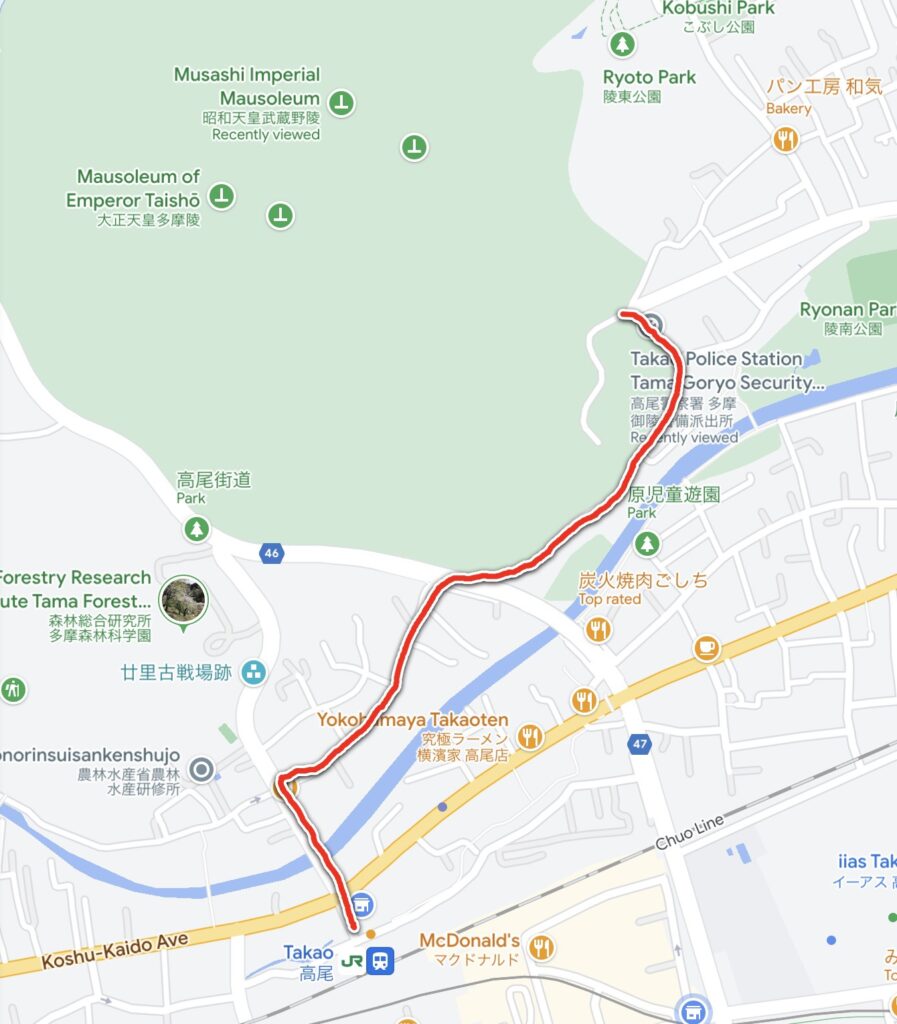
By taking a shortcut, it will be only some 15 minute walk from the north exit of JR Takao Station while you would have to arrive at the front gate before 3:30 pm for admission which is free of charge.
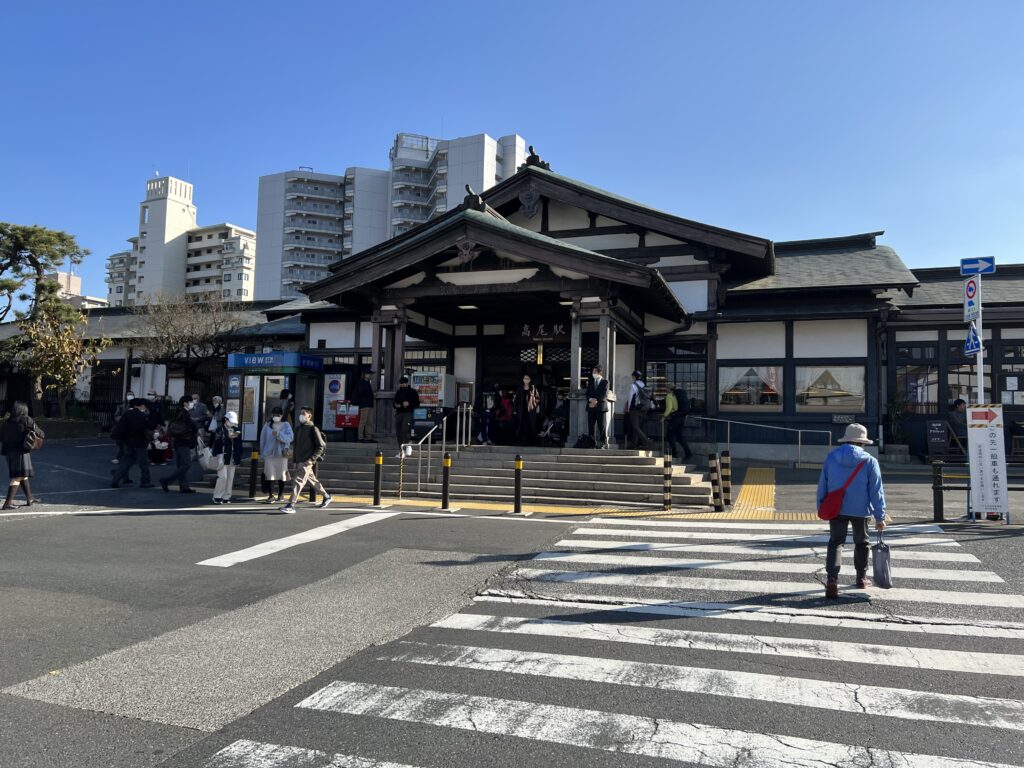
Starting from JR Takao Station, it will take some 4 minutes following the Takao Kaido Avenue to the Todorimachi intersection.
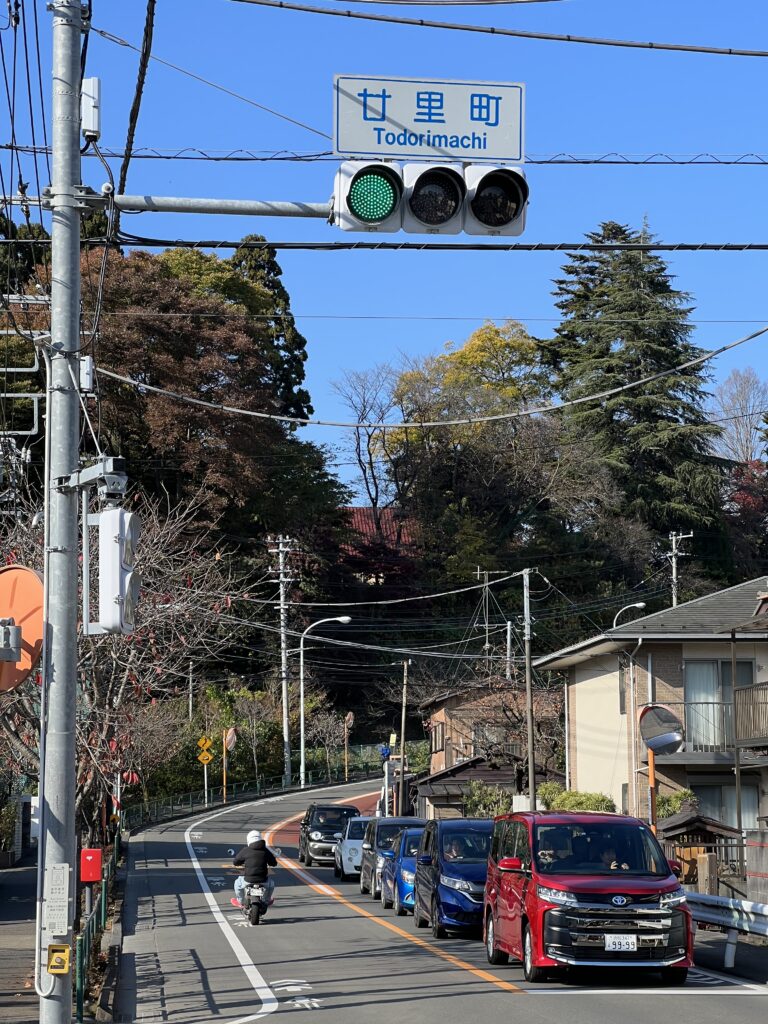
At the Todorimachi intersection, you turn right and follow this road until the front gate of the Musashi Imperial Graveyard.
If you should follow the front approach lined with beautiful rows of zelkova trees via the Koshu-Kaido Avenue, it will take much longer (i.e. some 30 minutes) to get to the front gate.

You will see the police station adjacent to the front gate where a couple of police officers are stationed to guard the mausoleums.
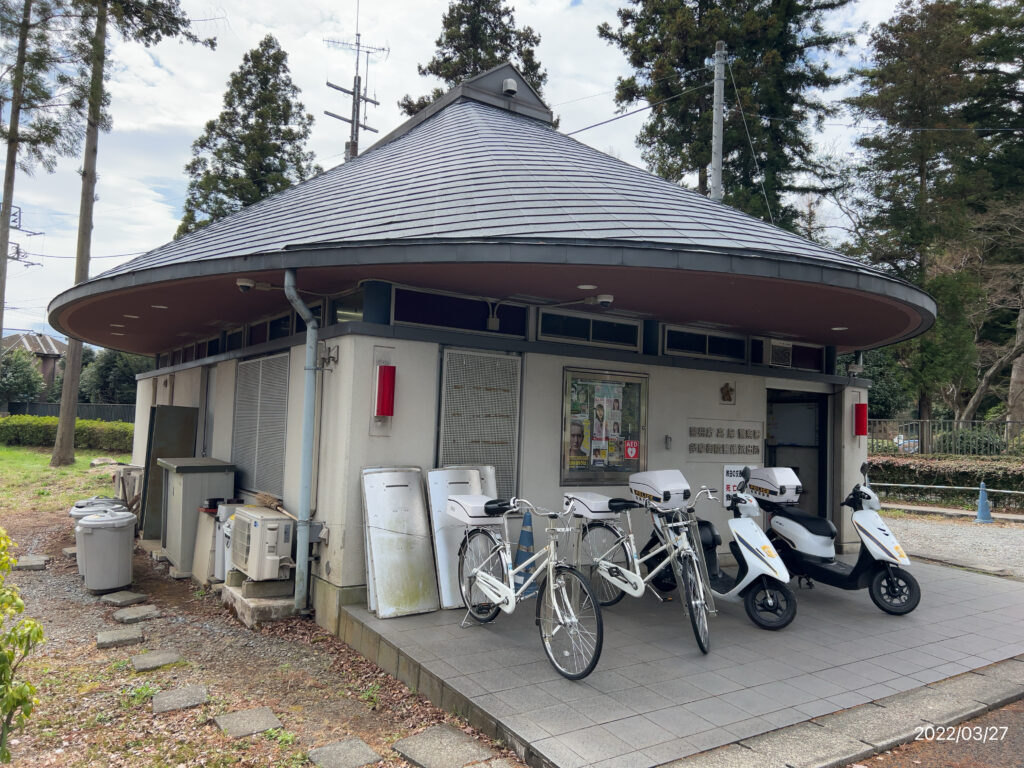
As they are watching visitors, you must be very careful and behave very well.
After you go through the front gate, you will see the main gate.
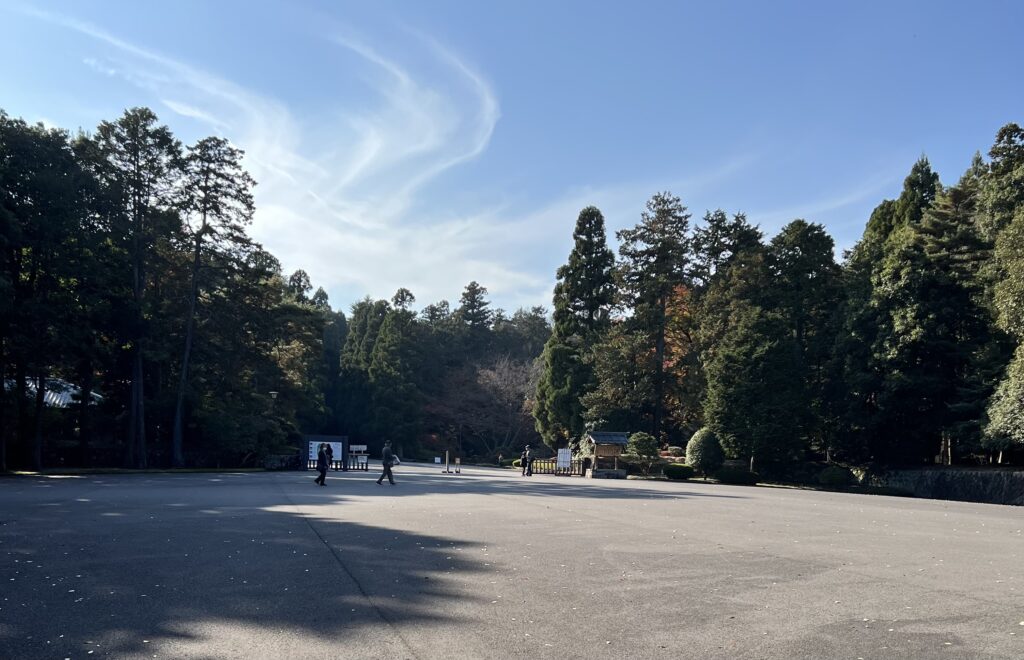
Going through the main gate, you will see the purification basin on your right by the pond where the visitors are supposed to purify themselves which is generally considered to feature a Shinto shrine.
In Shinto, purification before praying is of the utmost importance.
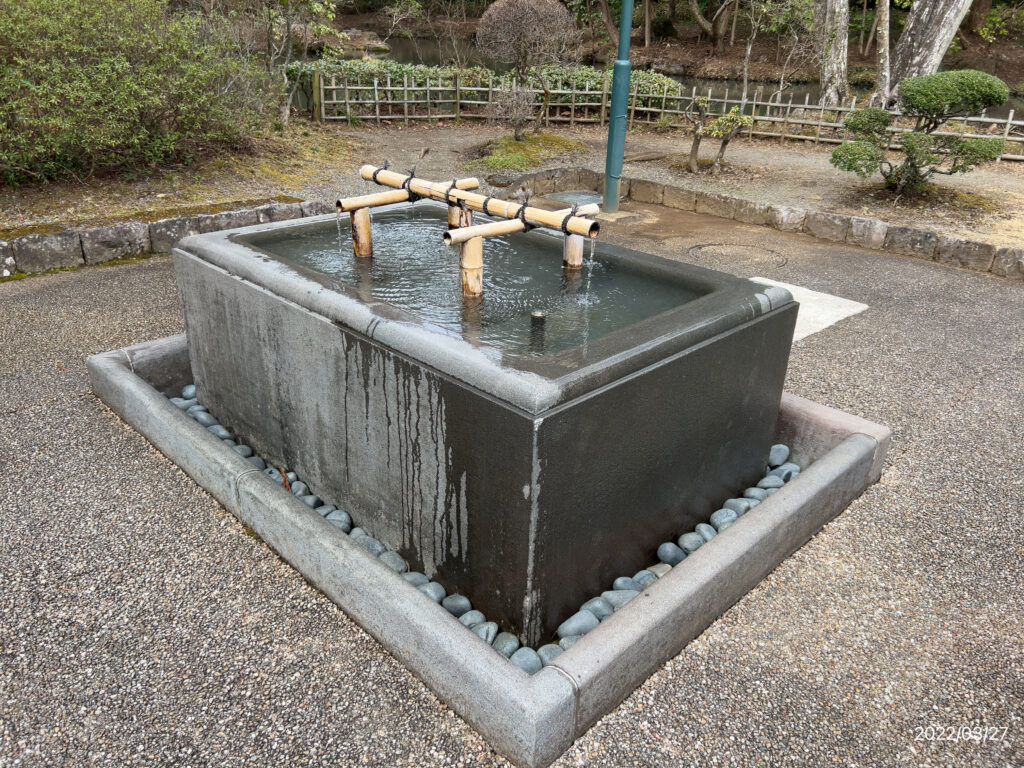
Before the Covid-19 pandemic, there was a ladle for the visitors’ use.
Taking advantage of this opportunity, let me explain how you should purify yourself if a ladle should be available.
Firstly, hold the ladle with your right hand and scoop up a ladleful of water and rinse your left hand by pouring water over it.
Secondly, hold the ladle with your left hand and rinse your right hand by pouring some water over it.
Then, hold the ladle with your right hand and pour some water into the cup of your left hand and rinse your mouth with it.
You must be careful not to gargle with the water or drink it.
Lastly, you should clean the handle of the ladle with all the remaining water by holding the cup upwards and the handle downwards.
Then, you should put it back where it was.
In the pond, you may see to some turtles (which symbolize longevity) basking in the sun.
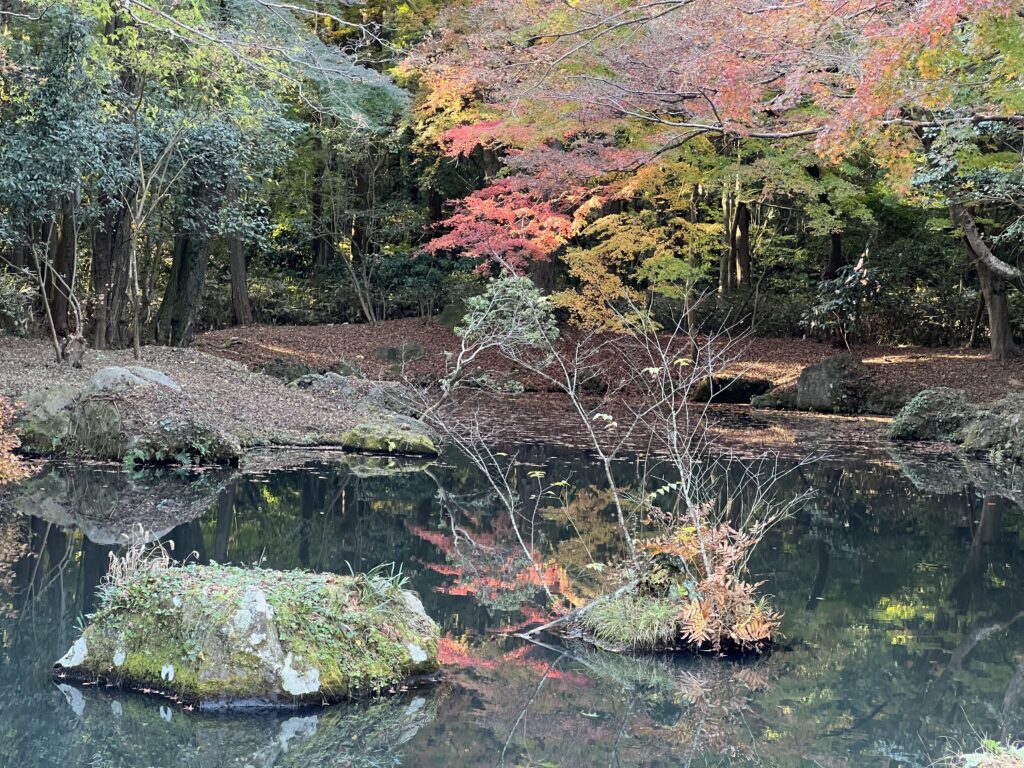
The front approach beyond the main gate is laid with gravel to purify the visitors which also generally features a Shito shrine.
As you see, the front approach is lined with beautiful Kitayama cedar trees ordered from Kyoto.

All the mausoleums there have been constructed in the same style as the Mausoleum of the 122nd Emperor Meiji (Meiji Tenno) which is located at Fushimi in Kyoto and called Fushimi Momoyama Mausoleum.

In fact, all the emperors’ mausoleums after the Meiji Restoration have adopted the style of dome shaped mound on a square base which is modeled on the Mausoleum of the 38th Emperor Tenchi (Tenchi Tenno) who ruled Japan in the 7th century.

As you see, all the mausoleums are equipped with a Tori-i gate which separates the ordinary world and the sacred world.

It is generally believed that a Tori-i gate symbolizes Shinto, the indigenous religion of Japan.
Combined with the purification basin and the front approach laid with gravel, this place has a Shinto shrine-like appearance.
That is, after the Meiji Restoration in which the Edict on the Separation of Buddhism and Shinto was issued in 1868 making Shinto the national religion of Japan, all the emperors’ funeral ceremonies have been conducted in the Shinto style and their respective bodies were buried in the ground.
On the other hand, it is understood that before the Meiji Restoration, the successive emperors’ funeral ceremonies had been conducted mostly in the Buddhist style since the 8th century.
Sennyu-ji Temple in Higashiyama, Kyoto houses the Buddhist mortuary tablets (called Ihai) of almost all the successive emperors from the 38th Emperor Tenchi (Tenchi Tenno).
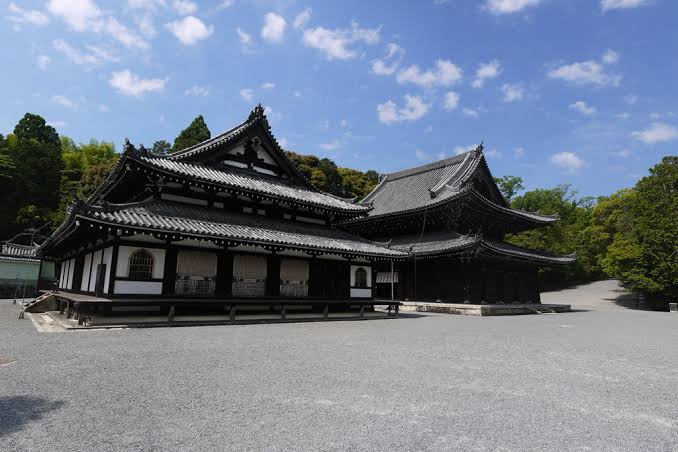
A Buddhist mortuary tablet refers to a memorial tablet on which posthumous Buddhist name of the dead is written so that the bereaved family or their descendant can worship his or her spirit that is believed to inhabit there.
One third of the those emperors before the Meiji Restoration are said to have been cremated in accordance with the Buddhist tradition with deepening of the faith in Buddhism.
It is the 39th Empress Jito (Jito Tenno) (the widow of Emperor Tenchi) who was for the first time in history cremated in accordance with the Buddhist tradition.
Before the introduction of Buddhism, however, it was more common to build huge burial mounds for Japanese emperors and members of the ruling class in accordance with the Shinto tradition.
Many of them are characterized by a large keyhole shaped mound (circular‐shaped ancient tomb with rectangular frontage) represented by “Mozu-Furuichi Kofun Group: Mounded Tombs of Ancient Japan” that has been designated as one of the World Heritage Sites in Japan since 2019 (https://whc.unesco.org/en/list/1593/).
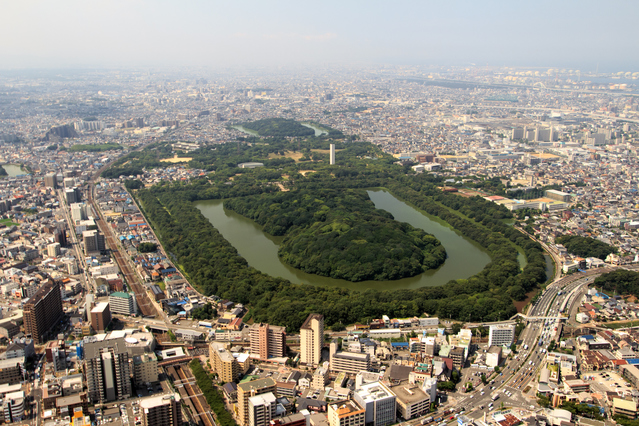
In fact, generally, many of the mounded tombs of ancient Japan are under the control of the Imperial Household Agency.
Accordingly, the general public including archaeological scholars are not allowed to enter the sites without the permission from the Imperial Household Agency.
It is a pity that due to the stubborn attitude of the Imperial Household Agency even the access to the World Heritage Site is limited and the excavation and research by archaeological scholars of the mounded tombs of ancient Japan is in general extremely restricted.
In the Edo period, all the successive emperors were buried in the ground for a different reason.
That is, it is understood that the earth burial was adopted for the successive emperors in the Edo period in accordance with the tradition of Confucianism while the funeral ceremonies were conducted in the Buddhist style.
This is mainly because the Tokugawa shogunate positioned Confucianism at the center of learning as its policy to maintain the social order.
Although I mentioned that a Tori-i gate in front of each mausoleum in the Musashi Imperial Graveyard symbolizes Shinto, I’m not quite sure about its origin.
According to one theory, it comes from the gate to the royal palace of Shang Dynasty (form the 17th century BC to the 11th century BC) in the ancient China which dynasty is said to have worshiped a bird as a divine messenger.
In fact, Tori literally means bird and i literally means reside.
A Tori-i gate looks like a bird perch, doesn’t it?
Another theory is that a Tori-i gate is derived from Buddhism and originated in the ancient India.

Author: Bernard Gagnon
https://upload.wikimedia.org/wikipedia/commons/7/7f/Stupa_1%2C_Sanchi_02.jpg
Looking at the photo of Great Stupa at Sanchi, Madhya Pradesh, India above, don’t you think that the Japanese emperors’ mausoleums mysteriously have something in common with this stupa across time and space in that there is a Tori-i like ornamental gate called torana in front of a hemispherical structure?
A stupa refers to a mound-like or hemispherical structure originally built in the ancient India to enshrine the ashes of Shakyamuni Buddha, which is actually the forerunner of Japanese pagoda.
Let me discuss a Tori-i gate in more details and explain the background of the Thai style white stupa located at the Yuki-en (literally, the Joyful Garden) in Mt. Takao separately on other occasions.
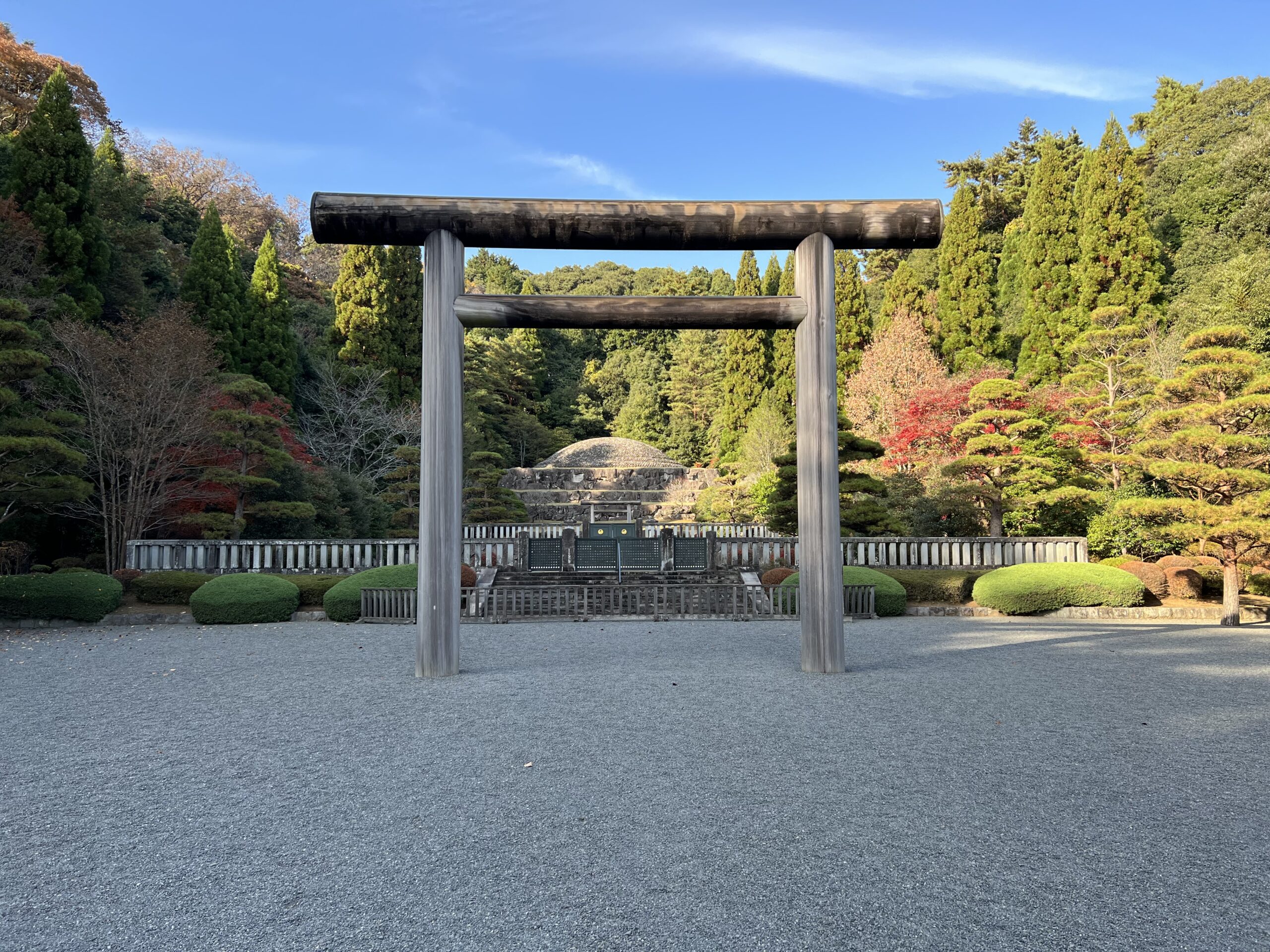
One response to “Optional tour to the Musashi Imperial Graveyard on the way back from Mt. Takao”
You rightously pointed out our imperial family differs historically and in length from royal families in other countries.